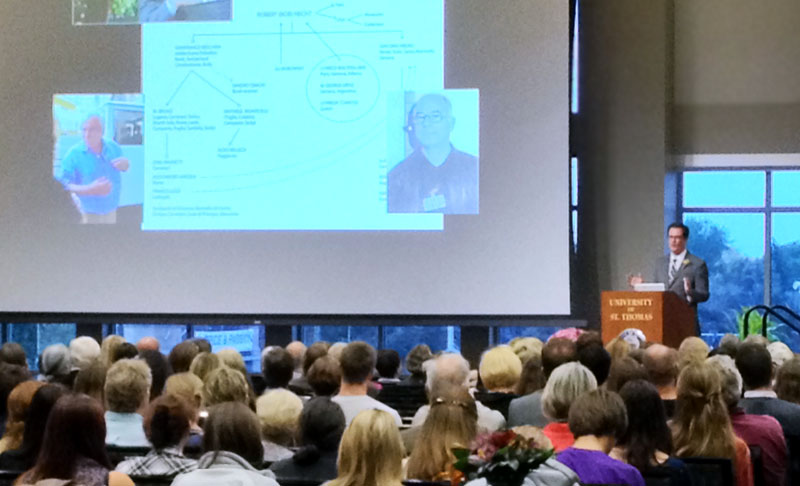
Author and reporter Jason Felch detailed an investigative project that looks into looted antiques in museums throughout the world as the keynote speaker at St. Thomas’ fourth annual graduate student symposium Friday.
Felch, a Los Angeles Times reporter and author of “Chasing Aphrodite: The Hunt for Looted Antiquities at the World’s Richest Museum,” introduced an online database called “WikiLoot,” aimed at finding stolen treasures and mapping what Felch called the “looted antiquity trade route.”
Felch said he used a “crowdsourcing” method to help with his project, asking museum visitors to upload pictures of work to a website and report its whereabouts in an effort to trace the history of looted antiquities.

Theology adjunct professor Isaac Alderman said he is interested in ancient archaeology and found unprecedented worth in the presentation’s academic value.
“I think it’s particularly important when we’re talking about looted objects because once they’re taken out of their context, they lose all their academic value,” Alderman said.
Felch said he fully expected to stop investigating the issue after writing his book, but he stayed involved when he discovered it branched beyond lost Greek and Roman work.
“(The evidence) was about pre-Colombian material coming out of Latin America; it was about Asian material coming out of southeast Asia and south Asia and India,” Felch said. “It’s really a global problem, and so because of that I’ve kind of stayed involved with the issue.”
So far, Felch said photos have come from a variety of sources, including court records and pictures from the antiquity dealers themselves.
Kara ZumBahlen, an art history adjunct professor, said the presentation was filled with unique information.
“I think I will be having students in my class take a look at the ‘WikiLoot’ website and explore some of the evidence,” ZumBahlen said.
Carol Stoddart, a tour guide at the Minneapolis Institute of Art, said although Felch’s ideas are compelling, they may not be for everyone.
“I am of the older generation that is not quite into Facebook or being on the Internet, so I probably would be less inclined,” Stoddart said.
Sophomore MacAulay Steenson is reading Felch’s book in one of her art history classes.
“I think it’s interesting that he wants to involve other people, and I think it’s an idea of empowering the general public to keep looking for (stolen) art,” Steenson said.
Nick Cocchiarella can be reached at cocc7813@stthomas.edu.


